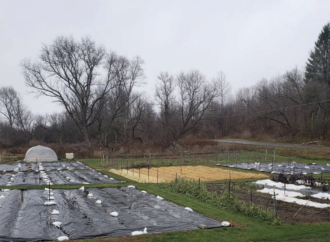Reusable tarps, including black plastic (silage tarps), clear plastic and landscape fabric, are multi-functional, accessible tools that are increasingly popular on small farms. The use of opaque materials that block light is frequently called “occultation,” while the use of clear tarps is called “solarization.” The use of the word "tarping” is a general term to include both.
Regardless of the material used, tarps are applied to the soil surface between crops and then removed prior to planting. In cool climates like that of the Northeastern U.S., tarping has emerged as an important way to manage weeds, crop residue, soil moisture and nutrients. This guide will help small farms to use tarps throughout their farm to best fit their needs.
Want more information? See the related SARE grant:
This material is based upon work that is supported by the National Institute of Food and Agriculture, U.S. Department of Agriculture through the Sustainable Agriculture Research and Education (SARE) program. Any opinions, findings, conclusions, or recommendations expressed in this publication are those of the author(s) and should not be construed to represent any official USDA or U.S. Government determination or policy.
